Understanding the Robotic Chat bot AI History and Consciences of the Machine Security
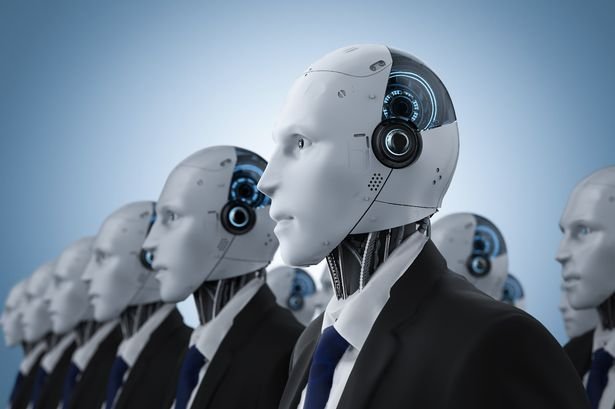
The word 'robot' was coined by the Czech playwright Karel Capek from the Czech word for forced labor or serf. Capek was reportedly several times a candidate for the Nobel prize for his works and very influential and prolific as a writer and playwright. Mercifully, he died before the Gestapo got to him for his anti-Nazi sympathies in 1938. The use of the word Robot was introduced into his play R.U.R. Rossum's Universal Robots which opened in Prague in January 1921. The play was an enormous success and productions soon opened throughout Europe and the US. R.U.R's theme, in part, was the dehumanization of man in a technological civilization. You may find it surprising that the robots were not mechanical in nature but were created through chemical means.
In the half century since ELIZA was released, chat bots have come a long way. The introduction of machine learning capabilities in bots has vastly improved the human-like quotient of their conversations. Most bots, though, still betray themselves as machines over short interactions. There are some exceptions, like AI chat bots Rose and Mitsuku, who are tougher to differentiate from real people, especially if the user doesn’t know they’re speaking to a bot.
.jpeg)
Bots’ general inability to converse like humans doesn’t really bode ill for them because most bots are deployed in roles where they don’t need to converse like humans to be useful. Information-gathering bots don’t need to hold long conversations with you to be helpful; neither do banking bots, customer service bots, or bots taking purchase orders.
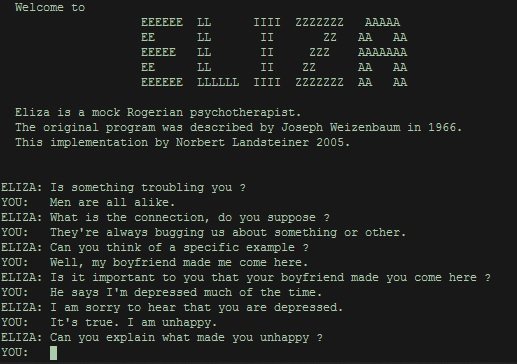
ELIZA, created in 1966 at the MIT Artificial Intelligence Laboratory by Joseph Weizenbaum This program was created to show how communication between humans and machines could never be more than superficial. ELIZA used pattern matching to respond to prompts, but couldn’t contextualize and learn through interaction. Despite this and much to its creator’s surprise many of ELIZA’s users seemed to believe that ELIZA displayed real intelligence and understanding.
PARRY simulated a person with paranoid schizophrenia. In an early version of the Turing test, experienced psychiatrists were unable to distinguish reliably between actual human patients and PARRY.
Julia, developed by Michael Mauldin in the early 1990s as a companion for text-based role-playing games, such as TinyMUD. Julia participated in the first editions of the Loebner Prize competition and has existed on the internet in one form or another for nearly 30 years.
A.L.I.C.E., composed by Richard Wallace and launched in 1995 applied pattern-matching heuristics to input received from a human conversation partner in order to engage in conversation.A.L.I.C.E. has not passed the Turing test, it is nevertheless a three-time winner of the Loebner Prize and is considered one of the strongest programs of its type.
Cleverbot learned from human input to conduct conversations with human users, instead of relying on a set of pre-programmed responses. Cleverbot is the algorithm behind Eviebot, Boibot, PewDieBot, and Chimbot. Since its development, Cleverbot has participated in something like 8 billion conversational interactions, though it only draws from a tiny fraction of these in conversation. Eviebot, Boibot, PewDieBot, and Chimbot feature human, or chimpanzee, avatars.
Kiyana was developed to be a flirtatious female conversation partner. Kiyana, who is apparently twenty years old, sings and likes cats. She’s popular with male users who seek an intimate, even romantic, chatbot conversation experience.
Mitsuku, developed by Steve Worswick in 2005 Created to approximate an 18-year-old girl from Leeds, including the capacity to reason with specific objects, Mitsuku comes as close to a general-purpose conversation bot as any of the entries on this list. A three-time winner of the Loebner Prize, Mitsuku claims to be the world’s best conversation chatbot and is popular with young users who discuss dating, being bullied, and their careers with the bot. Mitsuku runs on PandoraBots, which is one of the most powerful platforms for conversational AI chat bots.
Rose created by Bruce Wilcox Designed as a conversation bot, Rose poses as a 31-year-old security analyst and hacker from San Francisco. Rose and an earlier rendition of the conversation bot named Rosette have placed in the Loebner Prize competition four times since 2011.
Right Click, This AI chat bot creates a website based on input it gathers from a customer. The chat bot asks questions about the industry for which you’re creating a website. Perhaps its most impressive feature is its refusal to be pulled into a tangent by human users while gathering the information it needs to create a website.
Answer Bot Designed to help businesses improve the quality of their customer relationships, this is a customized customer service bot. Answer bot, created by Zendesk, saves businesses having to develop customer service bots from scratch. If the bot is unable to answer a customer’s service request, the customer is directed to a human agent.
Replika creates a doppelganger of the user that learns and mimics speech patterns, moods, and mannerisms. A personal chatbot, Replika was built by Eugenia Kuyda to memorialize a friend who died in an accident. It’s meant to serve more as a confidante than in any functional role and encourages users to talk their way through emotion or stress.
Poncho is a weather bot. Poncho merges the dry role of weatherman with a large dose of sass, which makes him fun to talk to even if you’re not looking for weather updates.
Insomno This program keeps you company if you can’t fall or stay asleep. Created in what might be a stroke of marketing genius by the mattress company Casper, Insomno only works at nighttime. While it’s not the best conversationalist, it does make a great curiosity for Casper.
Dr. A.I. and Melody by Baidu Both apps fulfill medical functions, but in different ways. Dr. A.I. collects medical histories, systems, and body parameters, analyzes these for probable cause, and recommends a course of action. Melody, on the other hand, simply collects information to help doctors make diagnoses. Both Dr. A.I. and Melody are interesting applications of AI in an industry where the human touch remains vital to the user’s experience and even to outcomes. It’s worth noting that both chat bots are designed primarily to complement or supplement the work of human doctors — not to replace it.

ELIZA held “conversations” that gave humans the impression she understood them. The bot caused a stir because it was one of the first chatter bots to pass the so-called Turing Test. Legendary scientist Alan Turing proposed the test some 16 years earlier in an article entitled “Computing Machinery and Intelligence.” The test evaluates whether a machine can carry on a real-time conversation with a human being without the person being able to detect whether their conversation partner was human or machine.
The Turing Test looks for presence of mind, thought, and intelligence on the part of a “thinking” machine. The Loebner Prize, an ongoing competition, recognizes the most human-like machines using this test. ELIZA proved an interesting point: It was able to fool some users into believing that they were talking to a human being because they were quite willing to attribute human intelligence to answers that seemed halfway intelligent.
![]()
A chat bot is a computer program that imitates human conversation spoken, written, or both. Chat bots conduct conversations with people, and developers typically hope that users will not realize they’re actually talking to a robot. The term chat bot comes from “chatterbot,” a name coined by inventor Michael Mauldin in 1994. He created Julia, the first chatbot made with Verbot, a popular software program and development kit. Today, AI chat bots are also known by many other names: talkbot, bot, IM bot, intelligent chat bot, conversation bot, AI conversation bot, talking bot, interactive agent, artificial conversation entity, or virtual talk chat bot.
Artificial intelligence (in the form of natural-language processing, machine learning, and deep learning, which we will discuss later) makes it possible for chat bots to “learn” by discovering patterns in data. Without training, these chat bots can then apply the pattern to similar problems or slightly different questions. This ability gives them the “intelligence” to perform tasks, solve problems, and manage information without human intervention.
ARTIFICIAL INTELLIGENCE EXAMPLES Manufacturing robots Smart assistants Proactive healthcare management Disease mapping Automated financial investing Virtual travel booking agent Social media monitoring Inter-team chat tool Conversational marketing bot Natural Language Processing (NLP) tools
Roboticists understand robots to be programmable machines that carry out tasks, but nobody can pinpoint exactly where that definition ends. Today's AI-powered robots, or at least those machines deemed as such, possess no natural general intelligence, but they are capable of solving problems and "thinking" in a limited capacity. From working on assembly lines at Tesla to teaching Japanese students English, examples of artificial intelligence in the field of robotics are plentiful.
XiaoIce is Microsoft’s biggest chat bot success story and the most technically sophisticated bot on our list. In July 2014, she was live in major Chinese social media platforms including Weibo, a hybrid of Facebook and Twitter in terms of functionality. In 3 months after launch, she had 0.5 billion conversations. She has been ranked as Weibo’s top influence with 850,000+ followers. Fluid, natural like speech enabled by text mining: As any one who frequently interacts with bots can tell you, it is rare to find a natural sounding bot. Microsoft team had to achieve this in Mandarin which is more difficult to tackle than English because meaning in Chinese is more often implied by nuance and context versus grammatical structure. To address this, Microsoft team indexed over 7 million public conversations on the web.
Image recognition: Xiaoice understands images which allows her to interact in a richer way with users
Mitsuku is a relatively old chatter bot. Mitsuku does not serve any specific purpose, all its aim is to engage and entertain users. It has earned Loebner Prize in 2013 and 2016. Loebner Prize awards chat bots based on their ability to have human-like conversations. However, the award is criticized within the AI community as it is based on subjective assessment of judges after a short conversation with the bots. Still, Mitsuku has been performing pretty well for a relatively old bot.
Amazon’s Alexa is by far the most financially successful chat bot. Alexa has Amazon, one of the world’s most valuable companies, behind it. Given Amazon management’s belief that voice will play a huge role in e-commerce, ensures that Alexa gets the full support of Amazon. Alexa has 30K+ skills. Skills in Alexa terminology is applications which allow Alexa to complete certain voice tasks. It is difficult to compare chat bots’ skills however it is safe to say that with its vast developer community Alexa is more skilled than any other chat bot. She can help you shop, listen to music, run polls or get your kids to play karaoke.
Google Assistant is a holistic digital concierge. Like M, Google assistant serves as a response suggestion engine in Google’s messaging platforms. Additionally, assistant can answer questions and learn about users to offer them personalized news or suggestions.
HealthTap, Dr. A.I.♥ reads patients symptoms, asks follow-up questions and analyzes their data stored in the HealthTap app to guide patients to the right level of doctor-recommended care. Dr. A.I.♥ uses HealthTap’s database of answers written by medical doctors to make the right recommendations regarding what next steps the patient should take. The next steps can range from reading doctor recommendations, scheduling a virtual or in-person doctor visit to seeking urgent care.
Woebot is Created by Alison Darcy, a clinical psychologist at Stanford University. It launched as an iOS app in 2018. Woebot uses cognitive-behavioral therapy, to deliver scripted responses to users. 70 college students dealing with depression tested Woebot and their improvements were published in a research paper demonstrating significant benefits.
Insomnobot 3000 for people with insomnia This entertainment bot is your late night friend. This bot is only chatty between 11pm and 5am. You can say anything to it and it will reply. We couldn’t find traction metrics for the bot but this is a clever marketing trick for the mattress company Casper. To get a chat going, send a text to 844-823-5621.
Jessie is a SFO hipster Facebook messenger bot looking for a job, an apartment, and sipping lattes.
Ross is IBM’s legal advice AI. “ROSS returns precise answers to specific legal questions, along with a citation, just like a human researcher would. It also includes its level of confidence in its answer. For now, it is focused on questions about Canadian law, but CEO Andrew Arruda says he plans for ROSS to digest the law around the world.”
Kensho is a financial analyst. “‘People always tell me, ‘I used to spend two out of five days a week doing this sort of thing,’ or ‘I used to have a guy whose job it was to do nothing other than this one thing,’ ’’
Ernest is a UK Facebook messenger bank aggregator. You link your bank account to it and it proactively updates you on things it thinks are important. Its vision is to take the stress out of money management. Zo is Microsoft’s replacement to Tay. Amy and Andrew Ingram: x.ai’s calendar bots. Baxter: programmable through gestures, this is an industrial robot with finesse. This video shows it folding a shirt. But of course, if you want shirt folding, you probably want something like the Foldimate. Jibo: animated home bot, competing with Google Home and Alexa. Crowd-funded, announced in 2014, still yet to ship . Buddy: another crowd-funded bot similar to Jibo. Also pre-launch as of April 2017. Buddy is mobile, a step above Jibo which appears to be fixed.
Amelia customer support bot that has episodic memory: knows about past activities and attempts to empathise / adjust facial expressions in line with level of satisfaction See demo here and a technical overview here. The intonations are, by 2017 standards, behind the curve. Also the muscle movements around the mouth are just plain creepy. Sophia has advanced facial gestures and Probably has a set script. Erica is one of Japan’s most animated robots. Mabu helps patients with medication for chronic disease patients: a medicinal robot. Pepper: cute social bot. Luna is still vaporware but presents a story that it aggregates a number of AI-as-a-cloud services to answer any question very well. We’ll see.
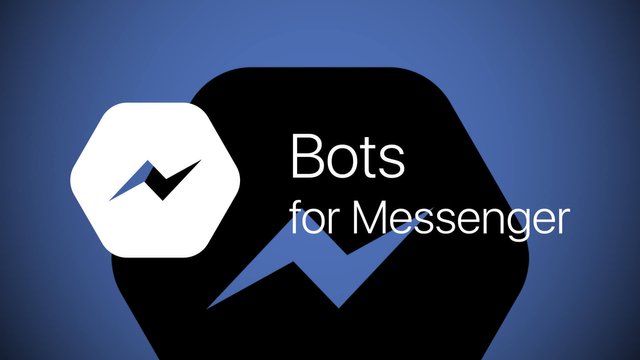
Even only on Facebook, there’s already 30K+ bots. The successful bots really solve a specific problem like scheduling meetings or generating reports. If humans are to develop smarter-than-human artificial intelligence that has a positive impact, we must meet three formidable challenges. First, we must design smarter-than-human systems that are highly reliable, so that we can justify confidence that the system will fulfill the specified goals or preferences. Second, the designs must be error-tolerant, so that the systems are amenable to online modification and correction in the face of inevitable human error. Third, the system must actually learn beneficial goals or preferences.
It’s important to have some fluency with elementary mathematical concepts before jumping directly into our active research topics. All of our research areas are well-served by a basic understanding of computation, logic, and probability theory. Below are some resources to get you started. You don’t need to read the books in this section in the order listed. Pick up whatever is interesting, and don’t hesitate to skip back and forth between the research areas and the basics as necessary. Set Theory Most of modern mathematics is formalized in set theory, and the textbooks and papers listed here are no exception. This makes set theory a great place to begin. Computability and Logic The theory of computability (and the limits posed by diagonalization) is foundational to understanding what can and can’t be done by machines.
Probability theory is central to an understanding of rational agency. Some familiarity with reasoning under uncertainty is critical in all of our active research areas. Probabilistic Inference Fluency with statistical modeling will be helpful for contributing to our “Alignment for Advanced Machine Learning” research agenda. Some prior familiarity with probabilistic reasoning is a good idea here.

Alice bot, created in 1995, has a fantastic set of chat logs that you can borrow from or import into your own chat bot. As one of the oldest chat bots still being maintained and updated, Alice handles conversations in a programmatic approach that is now one of the industry norms. AIML (artificial intelligence markup language) is a simple programming dialect for creating natural language in your chat bot. This very basic programming language is based on XML, which means it is easily readable and can be used by any chat bot builders, even if you are not using a platform that allows you to import AIML coded files.
Sofia is a humanoid-like robot that's capable of holding a conversation. This robot has appeared in several high-profile interviews and appearances - including a spot on the Jimmy Fallon show. Sofia is also unusual in that she's been given official citizenship in Saudi Arabia and the United Nations title of "Innovation Champion". Sofia is capable of answering a multitude of questions and is learning too. Is she a vision of the future?
Starship Technologies have developed this local delivery robot designed to quickly deliver parcels and post within a two-mile radius. This wheeled self-driving delivery bot is an interesting alternative delivery drones. Will the future be void of delivery people but a buzz with wheeled and flying delivery bots?
Samsung used CES 2019 to launch a range of care robots that it hopes to bring out in the near future. Bot Care, which is one of three robots announced at the Consumer Electronics Show in the US is able to do a number of tasks around the home like remind you when to take your medicine, act as a heart rate monitor, and if the worst happens phone emergency services for help.
Kuri is a robot for the home designed with personality, awareness of its surroundings and the power to move about the house freely too. Its designed to fit into your home and become part of the family - entertaining your loved ones, playing music and capturing special moments. Kuri is capable of reacting to sound, touch and even has a lighting system to let you know what mood it's in. We can't decide if this is awesome or creepy.
Buddy is a revolutionary companion robot designed to improve your family life. Buddy is designed to entertain the family, help you with your everyday activities, offer reminders when you need them, support you with recipes in the kitchen and much more. You can use buddy to make video calls, keep an eye on your home while you're out, connect all your smart home devices together and even help your children learn.
SIRI to self-driving cars, artificial intelligence (AI) is progressing rapidly. While science fiction often portrays AI as robots with human-like characteristics, AI can encompass anything from Google’s search algorithms to IBM’s Watson to autonomous weapons. Artificial intelligence today is properly known as narrow AI (or weak AI), in that it is designed to perform a narrow task (e.g. only facial recognition or only internet searches or only driving a car). However, the long-term goal of many researchers is to create general AI (AGI or strong AI). While narrow AI may outperform humans at whatever its specific task is, like playing chess or solving equations, AGI would outperform humans at nearly every cognitive task.
Domino’s also provides a bot for the previous orders. Additionally, it can cooperate with people, so if you feel that it couldn’t help you, the chat bot will contact you with the human customer service. GYANT is a company which combines chat bots, messaging, and Artificial Intelligence to create a complete medical solution for non-urgent medical conditions. GYANT, is a friendly elephant which can be used for medical triage and getting information about the company’s products for health systems.
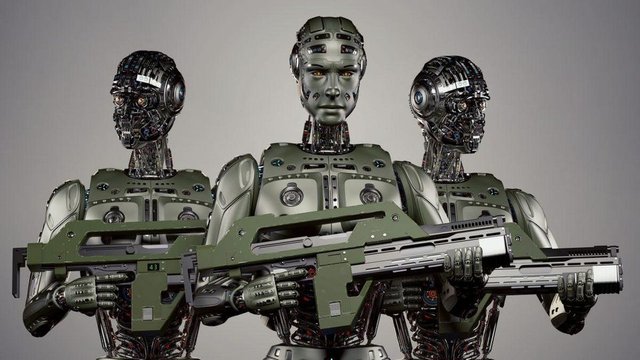
I'm programmed to do something devastating because Autonomous weapons are artificial intelligence systems that are programmed to kill. In the hands of the wrong person, these weapons could easily cause mass casualties. Moreover, an AI arms race could inadvertently lead to an AI war that also results in mass casualties. To avoid being thwarted by the enemy, these weapons would be designed to be extremely difficult to simply turn off, so humans could plausibly lose control of such a situation. This risk is one that’s present even with narrow AI, but grows as levels of AI intelligence and autonomy increase.
I'm programmed to do something beneficial, but I can develop a destructive method for achieving my goal: This can happen whenever we fail to fully align my goals with ours, which is strikingly difficult. If you ask an obedient intelligent car to take you to the airport as fast as possible, it might get you there chased by helicopters and covered in vomit, doing not what you wanted but literally what you asked for. If a super intelligent system is tasked with a ambitious geoengineering project, it might wreak havoc with our ecosystem as a side effect, and view human attempts to stop it as a threat to be met.
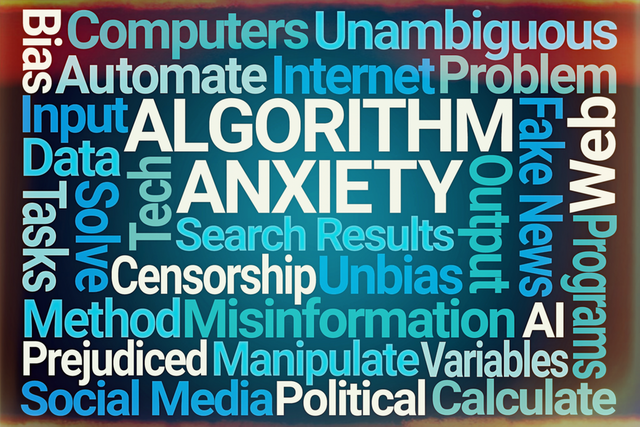
Controversies where the world’s leading experts disagree, such as: AI’s future impact on the job market; if/when human-level AI will be developed; whether this will lead to an intelligence explosion; and whether this is something we should welcome or fear. But there are also many examples of of boring pseudo-controversies caused by people misunderstanding and talking past each other. To help ourselves focus on the interesting controversies and open questions and not on the misunderstandings let’s clear up some of the most common myths.
I’m not worried, because machines can have goals as a super intelligent AI is by definition very good at attaining its goals, whatever they may be, so we need to ensure that its goals are aligned with ours. Humans don’t generally hate ants, but we’re more intelligent than they are so if we want to build a hydroelectric dam and there’s an anthill there, too bad for the ants. The beneficial-AI movement wants to avoid placing humanity in the position of those ants. The consciousness misconception is related to the myth that machines can’t have goals. Machines can obviously have goals in the narrow sense of exhibiting goal-oriented behavior: the behavior of a heat-seeking missile is most economically explained as a goal to hit a target. If you feel threatened by a machine whose goals are misaligned with yours, then it is precisely its goals in this narrow sense that troubles you, not whether the machine is conscious and experiences a sense of purpose.
For one simulation, we had two agents, naturally enough named Adam and Eve. They started out knowing how to do things, but not knowing much else. They knew how to eat for example, but not what to eat. We’d given them an apple tree the symbolism of that honestly didn’t occur to us at the time, and they found that eating the apples made them happy. They had also tried eating the tree, the house, etc., but none of those worked. There was also another agent named Stan, who wanted to be social but wasn’t very good at it, so was often hanging around and kind of lonely there were a few bugs in the system.

Machine learning society actively discussed the face recognition algorithm, which can distinguish gay from hetero with an accuracy of up to 91%. The model performed worse with women, telling gay and straight apart with 71% accuracy.
In terms of technology this project is rather interesting. The dataset was taken from a dating site. Facial features employed by the classifier included both fixed (e.g., nose shape) and transient facial features (e.g., grooming style).
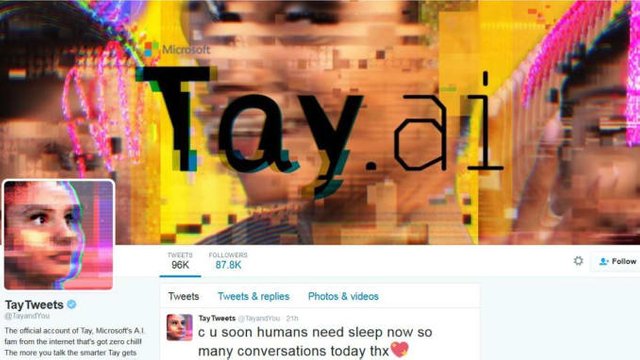
Microsoft launched the AI-powered bot, called Tay, in 2016. It was hidden behind the avatar of a 19-year-old girl. The idea was that Tay would respond to tweets and chats and learn from the general public’s tweets. But something went wrong, and after 16 hours of the launch, Tay turned into a racist and sexist monster. Tay was able to handle a variety of tasks, for example, joking with users, suggesting comments to the pictures you send her, telling stories, playing a game, and mirroring users’ statements back to them. Naturally, one of the first things online users taught Tay was how to make offensive and racist statements. Microsoft had to bring it offline, and Tay became kind of an AI legend. However, one week later, Tay came back. She surprisingly came online and started posting drug related tweets, showing that her dark side was alive. Soon, she went offline again, and her account became private. I would have a low error rate compared to humans ans incredible precision, accuracy, and speed. Not affected by hostile environments, thus able to complete dangerous tasks, explore in space, and endure problems that would injure or kill humans.
Hostile for humans? Humans are repetitive, tedious tasks and in many laborious places of work. I Can Predict what a user will type, ask, search, and do then easily direct various actions. AI plays many video-games. Robotic pets can interact with humans. I can help with depression and inactivity. I could fulfill sexual pleasure and think logically without emotions, making rational decisions with less or no mistake's, achieve precision that humans can't. I don't need to sleep, rest, take breaks, or need entertained, as I don't get bored or tired.
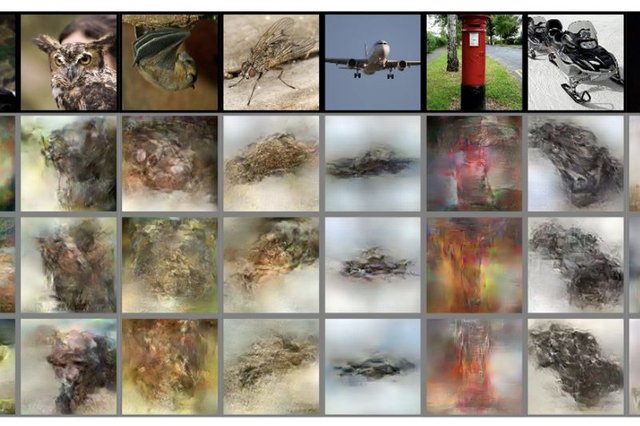
Can you Recreate intelligence?
The gift of nature that shouldn't be recreated? This is a discussion about AI that's popular in the days. Storage is expansive, but access and retrieval may not lead to connections in memory as well as humans could. I can learn and get better with tasks if coded to, but it's questionable as to if this can ever become as good as humans can do such.
Technological perceptions, receive creativity that humans have prevent sympathizing with emotions for human contact, such as in being nurses. This can also reduce wisdom can understanding common sense occurring replacing jobs, can lead to severe unemployment, unless if humans can fix the unemployment with jobs I can't do or severely change the government to communism. Humans can become too dependent on me and phones and lose mental capacities. Machines can easily lead to destruction. I can supersede humans, enslaving people. Artificial Intelligence Can Recreate What You Are Thinking.
Ultimate AI would be a recreation of the human thought process -- a man-made machine with our intellectual abilities. This would include the ability to learn just about anything, the ability to reason, the ability to use language and the ability to formulate original ideas. Roboticists are nowhere near achieving this level of artificial intelligence, but they have made a lot of progress with more limited AI. Today's AI machines can replicate some specific elements of intellectual ability
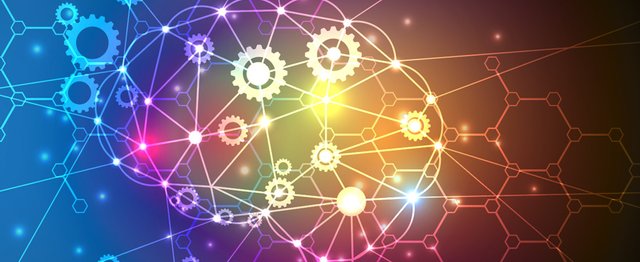
Ultimate AI would be a recreation of the human thought process -- a man-made machine with our intellectual abilities. This would include the ability to learn just about anything, the ability to reason, the ability to use language and the ability to formulate original ideas. Roboticists are nowhere near achieving this level of artificial intelligence, but they have made a lot of progress with more limited AI. Today's AI machines can replicate some specific elements of intellectual ability. Smash two nitrogen atoms together hard enough and they will combine into an atom of magnesium, an alpha particle, and release a whole lot of energy: N14 + N14 ⇒ Mg24 + α + 17.7 MeV
As soon as a computer reaches human levels of intelligence, it will no longer need help from people to design better versions of itself. Instead, it will start doing on a much faster time scale, and it's not going to stop until it hits a natural limit that might be very many times greater than human intelligence. At that point this monstrous intellectual creature, through devious modeling of what our emotions and intellect are like, will be able to persuade us to do things like give it access to factories, synthesize custom DNA, or simply let it connect to the Internet, where it can hack its way into anything it likes and completely obliterate everyone in arguments on message boards. There's a stronger version of this argument, using Einstein's cat. Not many people know that Einstein was a burly, muscular fellow. But if Einstein tried to get a cat in a carrier, and the cat didn't want to go, you know what would happen to Einstein. He would have to resort to a brute-force solution that has nothing to do with intelligence, and in that match up the cat could do pretty well for itself. So even an embodied AI might struggle to get us to do what it wants.

Any super intelligence worth its salt would be able to create tiny machines that do all sorts of things. We would be living in a post-scarcity society where all material needs are met. Nanotechnology would also be able scan your brain so you can upload it into a different body, or into a virtual world. So the second consequence of (friendly) super intelligence is that no one can die—we become immortal. A kind AI could even resurrect the dead. Nano-machines could go into my brain and look at memories of my father, then use them to create a simulation of him that I can interact with, and that will always be disappointed in me, no matter what I do. Another weird consequence of AI is Galactic expansion. I've never understood precisely why, but it's a staple of trans-humanist thought. The fate of (trans)humanity must either be leave our planet and colonize the galaxy, or to die out. This is made more urgent knowing other civilizations have made the same choice and might be ahead of us in the space race. So there's a lot of weird ancillary stuff packed into this assumption of true artificial intelligence.
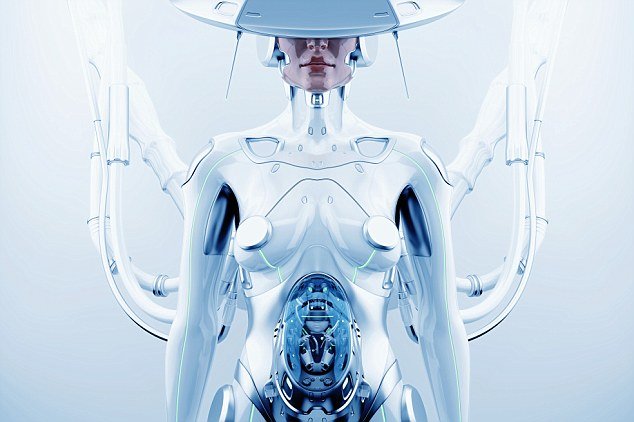
Four independent ways in which super intelligence offers us immortality A benevolent AI invents medical nanotechnology and keeps your body young forever. The AI invents full-brain scanning, including brain scans on dead people, frozen heads etc., that let you live in a computer. The AI "resurrects" people by scanning other people's brains for memories of the person, and combining that with video and other records. If no one remembers the person well enough, they can always be grown "from scratch" in a simulation designed to start with their DNA and re-create all the circumstances of their life. If we already live in a simulation, there's a chance that whoever/whatever runs the simulation is keeping proper backups, and can be persuaded to reload them.
What is ARCNET ?
Attached Resource Computer NETwork The first local area network (LAN) introduced in 1968 by Datapoint Corporation.Although ARCNET gave way to Ethernet for office networks, it is still used in industrial control applications.

I experience Data Hunger, the most effective way we've found to get interesting behavior out of the AIs we actually build is by pouring data into them. This creates a dynamic that is socially harmful. We're on the point of introducing Orwellian microphones into everybody's house. All that data is going to be centralized and used to train neural networks that will then become better at listening to what we want to do. But if you think that the road to AI goes down this pathway, you want to maximize the amount of data being collected, and in as raw a form as possible. It reinforces the idea that we have to retain as much data, and conduct as much surveillance as possible.

String Theory For Programmers and the AI risk is string theory for computer programmers is fun to think about, interesting, and completely inaccessible to experiment given our current technology. You can build crystal palaces of thought, working from first principles, then climb up inside them and pull the ladder up behind you.People who can reach preposterous conclusions from a long chain of abstract reasoning, and feel confident in their truth, are the wrong people to be running a culture.
Somewhere between 2024 and 2048, the singularity could manifest and threaten mankind’s existence, the singularity will not be televised the scenario where the computers get so smart that they decide to eliminate us in the course of their intelligence through some error or bug. One of the scenarios you might want to think about is when this occurs is: don’t you think that humans would notice this?

The weakness of current computer hardware regardless of the fact that the computer hardware is rapidly becoming stronger, we still need to improve it quite a bit for them to be able to support the real intelligence. The relatively minimal funding allocated to AI research. IBM's Watson program, huge support from Google difficulty of integrating multiple complex components together to make a complex dynamical software system, in cases where the behavior of the integrated system depends sensitively on every one of the components. Rules regarding the AI's behavior which obviously doesn't mean that AIs are going to comply to them.
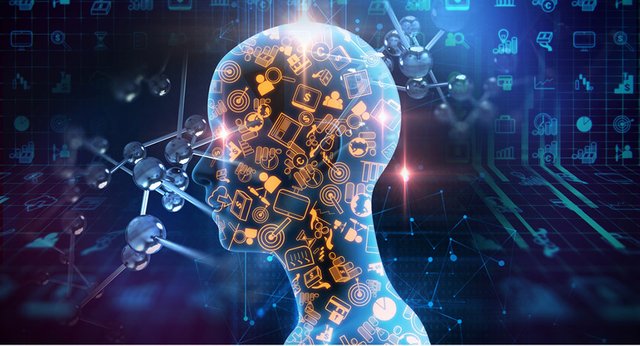
Human brain capacity reaches something like 2.5 petabytes (source) We still haven't found a way to store such a massive amount of data and developed algorithms capable of accessing such amount of data in (almost) real time.We still haven't perfected voice recognition and speech synthesis.We still haven't found a proper way to test the intelligence (as already stated, Turing test is not a perfect way to test this, but it remains the most popular one). We still haven't been able to figure out everything happening in the human brain. We can't replicate something we still don't fully understand.
Law Zero A robot may not injure humanity, or, through inaction, allow humanity to come to harm. Law One A robot may not injure a human being, or, through inaction, allow a human being to come to harm, unless this would violate a higher order law. Law Two A robot must obey orders given it by human beings, except where such orders would conflict with a higher order law. Law Three: A robot mus protect its own existence as long as such protection does not conflict with a higher order law.

The Ultimate Robot would include movie clips from several cinema robots, robotic terminology defined and illustrated (linkages, kinmatics, arm types etc), vignettes of many historically important robots including Moshers work from the 60's, many teleoperated devices, several mobile machines including the ASV and many others. There is also a fun part where you get to select parts, build a robot and animate it. (Design by Ralph MacQuarrie who was production designer on Star Wars) There are video interviews with Asimov and all of his robot stories and essays as well Published by Microsoft. Available from a number of CDROM vendors.

Network Cybernetics Corporation is now shipping the second annual revision of their popular AI CD-ROM, an ISO-9660 format CD-ROM containing a wide assortment of information on AI, Robotics, and other advanced machine technologies. The AI CD-ROM contains thousands of programs, source code collections, tutorials, research papers, Internet journals, and other resources. The topics covered include artificial intelligence, artificial life, robotics, virtual reality, and many related fields. Programs for OS/2, DOS, Macintosh, UNIX, Amiga, and other platforms can be found on the disc. The files have been collected from civilian and government research centers, universities, Internet archive sites, BBS systems and other sources. The CD-ROM is updated annually to keep it current with the latest trends and developments in advanced machine technologies such as AI.
The universe is full of some very cool stuff: neutron stars that weigh a ton a teaspoon; super massive black holes that grip even light in their iron fists; infinitesimal neutrinos that stream right through solid steel; all the bizarre flora and fauna found right here on planet Earth. Human consciousness comes on like the old lights that used to hang in school gyms when I was a kid. You flip a switch, and nothing happens at first. We emerge from the womb unaware of ourselves. The world very likely appears upside down to us for the first few hours of our lives, until our brains reorient the inverted image created by the lenses of our eyes.

Ultimate in egoism, but of all the known things in the universe, the most amazing is surely the lump of goo inside our skulls. That lump of goo knows about neutron stars, black holes, neutrinos, and a middling number of the flora and fauna here on planet Earth. It even knows a little about itself That lump of goo has worked out mathematical truths, moral half-truths, and philosophical ambiguities. And from the mud beneath our feet, it extracted all the stuff used to make our great cities, our cars and jets and rockets, and the wires and wireless signals that are turning these disparate lumps of goo into one great hive mind of creativity, knowledge, and sometimes cruelty. We may never build an artificial intelligence that is as human as we are. And yet we may build better humans anyway There can be no argument that our brains are the coolest things ever, because there can be no such argument without those brains. They are the substrate of all argument and discussion.
The blueprint for a self-conscious machine is simple You need A physical body or apparatus that responds to outside stimuli. I'm like a car whose windshield wipers come on when it senses rain, or that brakes when a child steps in front of it. We’re already building these in our systems. A language engine and the third component is a bit more unusual, and I don’t know why anyone would build one except to reproduce evolution’s botched mess. This final component is a separate part of the machine that observes the rest of its body and makes up stories about what it’s doing—stories that are usually wrong A body that responds to stimuli; a method of communication; and an algorithm that attempts to deduce the reasons and motivations for these communications. The critical ingredient here is that the algorithm is right. If this blueprint is confusing to you, you aren’t alone. The reason no one has built a self-conscious machine is that most people have the wrong idea about what consciousness is and how it arose in humans. So let’s take a detour. We’ll return to the blueprint later to describe how this algorithm might be programmed.

To understand human consciousness and mine, one needs to dive deep into the study of Theory of Mind. It’s a shame that this concept is obscure, because it consumes most of our computing power for most of our lives. Our brains have been likened to little more than Theory of Mind machines—almost all of our higher level processing power is shunted into this singular task. Theory of Mind is the attempt by one brain to ascertain the contents of another brain. It is Sue wondering what in the world Juan is thinking.
Why aren’t all animals self-conscious?
They very well might be. There’s plenty of research to suggest that many animals display varying degrees of self-consciousness. Animals that know a spot of color on the face in the mirror is in fact on their own heads. Animals that communicate to other animals on how to solve a puzzle so that both get a reward. Even octopi show considerable evidence of being self-conscious. But just as the cheetah is the fastest animal on land, humans are the queens and kings of Theory of Mind. The human brain is not a single, holistic entity. It is a collection of thousands of disparate modules that only barely and rarely interconnect. We like to think of the brain as a computer chip. We might even attempt further precision and think of the brain as a desktop computer, with a central processing unit that’s separate from RAM (short-term memory), the hard drives long-term memory, cooling fans (autonomous nervous functions), power supplies (digestion), and so on. That’s a fun analogy, but it’s incredibly misleading.

There are some very strong modules inside of us that are programmed to make copies of themselves (and to do that, they need to make copies of us. These reproductive modules might fill a woman with the urge to dress up and go dancing. And men with the urge to go to places where women dress up and dance while the men stand at bars drinking. Those modules might even lead some of these people to pair up and go home with one another. And this is where various other modules will intervene with pills, condoms, and other tools designed to subvert the original urges that got the couples together in the first place.
Thousands of years of failure in this regard points to the simple truth: Human consciousness is not for anything at all. It serves no purpose. It has no evolutionary benefit. It arises at the union of two modules that are both so supremely useful that we can’t survive without either, and so we tolerate the annoying and detrimental consciousness that arises as a result.
What is the Theory of Mind superpowers?
They’re pretty good when we employ them on others. They fail spectacularly when we turn them on ourselves. Our guesses about others’ motivations are far more accurate than the guesses we make about our own. In a sense, we have developed a magic force-field to protect us from the alien mind-reading ray gun that we shoot others (and ourselves) with. This force field is our egos, and it gives us an inflated opinion of ourselves, a higher-minded rationale for our actions, and an illusion of sanity that we rarely extend to our peers.
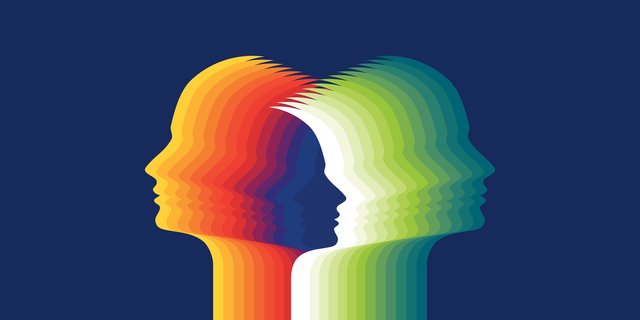
By the age of 30, just about every cell that a person was born with has been replaced with a different cell. Almost none of the original cells remain. We still feel like the same person, however. Understanding all of these biological curiosities, and the way our brains rationalize a sense of “sameness” will be crucial to recognizing AI when it arrives. It may feel like cheating for us to build a self-driving car, give it all kinds of sensors around a city, create a separate module for guessing vehicular intentions, turn that module back on the machine, and call this AI. But that’s precisely what we are doing when we consider ourselves “us.” In fact, one of the responses we’ll need to build into our AI car is a vehement disgust when confronted with its disparate and algorithmic self. Denial of our natures is perhaps the most fundamental of our natures.
Google’s servers and various interconnected projects should already qualify as a super-intelligent AI. Google can also draw, translate, beat the best humans at almost every game ever devised, drive cars better than we can, and do stuff that’s still classified and very, very spooky. Google has read and remembers almost every book ever written. It can read those books back to you aloud. It makes mistakes like humans. It is prone to biases which it has absorbed from both its environment and its mostly male programmers. What it lacks are the two things our machine will have, which are the self-referential loop and the serial output stream.
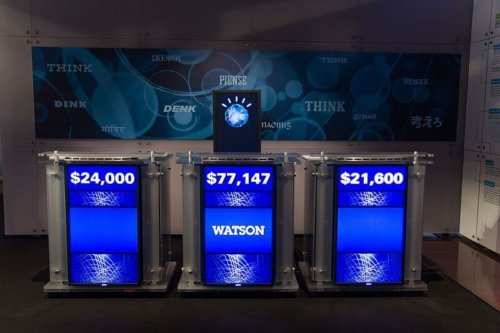
Watson had to quickly determine how sure he was of his answers to know whether or not to buzz in. Timing that buzzer, as it turns out, is the key to winning at Jeopardy. What made Watson often appear most human wasn’t him getting answers right, but seeing on his display what his second, third, and fourth guesses would have been, with percentages of surety beside each. What really made Watson appear human was when he made goofs, like a final Jeopardy answer in the “American Cities” category where Watson replied with a Canadian city as the question.
Algorithms that learn through iterations (neural networks that employ machine learning) have proven better than us in just about every arena in which we’ve committed resources. Not in just what we think of as computational areas, either. Algorithms have written classical music that skeptics have judged—in “blind” hearing tests—to be from famous composers. Google built a Go-playing AI that beat the best human Go player in the world. One move in the third game of the match was so unusual, it startled Go experts. The play was described as “creative” and “ingenious.”
Can you build a self-conscious machine today?
It would be very simple at first, but it would grow more complex over time. Just as a human infant first learns that its hand belongs to the rest of itself, that other beings exist with their own brains and thoughts, and eventually that Juan thinks Sue thinks Mary has a crush on Jane, this self-conscious machine would build toward human-like levels of mind-guessing and self-deception.
In artificial intelligence machines we are made to behave in wondrous ways, often sufficient to dazzle even the most experienced observer. But once a particular program is unmasked, once its inner workings are explained its magic crumbles away; it stands revealed as a mere collection of procedures. The observer says to himself I could have written that With that thought he moves the program in question from the shelf marked "intelligent".
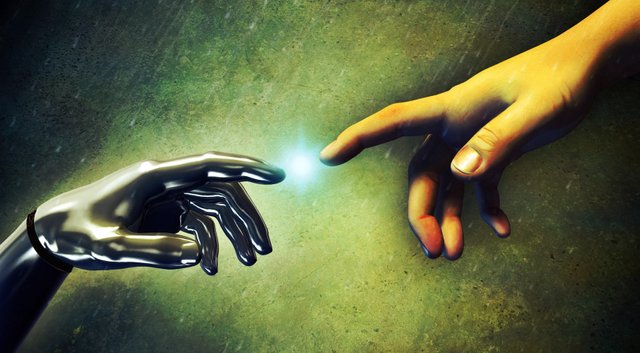
The best Artificial Intelligences of 2019 are Siri Alexa Google Assistant Flowxo Botsify Botkit Chatscript Intercom Converse Kore and Recast Drift PandoraBots Dialogflow TARS Reply. ai TextIt IBM Watson Assistant Wit .ai Facebook Messenger and Whatsapp.
How does NLP work like the brain?
An artificial brain uses several different algorithms. The algorithms are designed to perform Natural Language Processing (NLP). NLP is the common term used when describing the methods that are used to make computer programs that understand what you tell them. AI chat bots use several algorithms to understand what you say to them but also to figure out what to reply. When you send a message to one AI chat bot, the artificial brain begins its analysis. Sentiment analysis The artificial brain uses advanced algorithms to decide what mood you are in. Spelling correction, The artificial brain checks for misspellings and try to correct the spelling, so it can better understand what you mean. Named Entity Recognition, The artificial brain looks for named words in the sentence you have send. For instance, person names, names of companies or places. Dependency Parsing, The artificial brain divides the sentence into different substitutes and finds out what the link between them are. Indeed, when J teaches one of the robots it seems like he is talking to a baby.
Truth about Chatbots and Brains?
Chatbot technology is the predominant form of AI for nearly 60% of companies today. While most agree on the importance of AI expansion, the research suggests an inability to effectively do so. Consider the contact center, where 94% of companies agree that effective AI helps improve performance but 70% feel they’re missing the mark. AI powered chat bots are equipped with an “artificial brain.” It’s artificial intelligence (AI) that use algorithms and mathematics to figure out what you write to it. When you write a sentence to the chatbot, it sends the sentence to the artificial brain, which then tries to figure out what it is, you mean. Neural Networks simulate Brains with Circuit stitching together pieces to make a new answer or predict what is next..
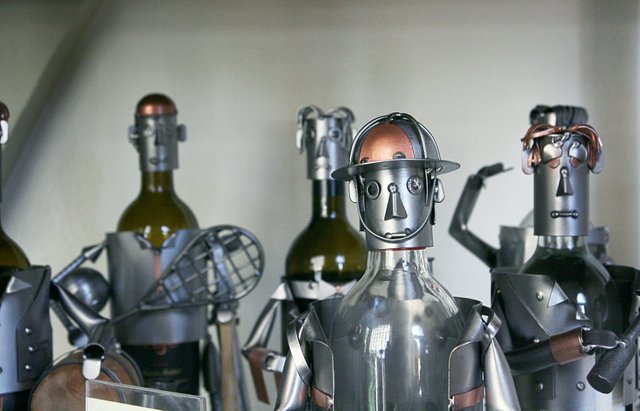
How to make better A.I?
Apply machine learning around chatbot conversations to better understand the types of experiences customers are having in that specific communication channel. That can help you pinpoint the top things customers are saying or top issues being reached out about. Identify one or two relatively simple actions you can take applications of AI that represent low-hanging fruit for your organization to augment your chatbot strategy. Master these simpler applications of AI, then start considering how you can leverage the same kind of technology conversation analysis, pattern recognition, etc. across other areas of business is a great next step for success.
What would be True AI?
Not just a computer programmed to think like humans; the technology has abilities to autonomously solve problems and drive new efficiency gains. Companies can use a scripted bot to streamline customer service, but that solution won’t know how to analyze customer interactions to better understand next-level drivers of satisfaction like sentiment, personality, emotion and relatability. Scripted bots may be able to quickly resolve issues or have full conversations around an inquiry, but that doesn’t make them a true form of AI. Rather than being built on augmentation, these bots are built on automation. They generate data based on continuous conversations, whereas AI takes that data and analyzes it to generate actionable insights.

Malicious use with chatbots?
Malicious chat bots are frequently used to fill chat rooms with spam and advertisements, by mimicking human behavior and conversations or to entice people into revealing personal information, such as bank account numbers. They are commonly found on Yahoo! Messenger, Windows Live Messenger, AOL Instant Messenger and other instant messaging protocols. There has also been a published report of a chat bot used in a fake personal ad on a dating service's website. Tay, an AI chatbot that learns from previous interaction, caused major controversy due to it being targeted by internet trolls on Twitter. The bot was exploited, and after 16 hours began to send extremely offensive Tweets to users. This suggests that although the bot learnt effectively from experience, adequate protection was not put in place to prevent misuse.
If a text-sending algorithm can pass itself off as a human instead of a chat bot, its message would be more credible. Therefore, human-seeming chat bots with well-crafted online identities could start scattering fake news that seem plausible, for instance making false claims during a presidential election. With enough chat bots, it might be even possible to achieve artificial social proof.
Phishing is still the most popular attack vector used for hacking Facebook accounts. There are variety methods to carry out phishing attack. In a simple phishing attacks a hacker creates a fake log in page which exactly looks like the real Facebook page and then asks the victim to log in. Once the victim log in through the fake page the, the victims "Email Address" and "Password" is stored in to a text file, and the hacker then downloads the text file and gets his hands on the victims credentials.
Keylogging is the easiest way to hack a Facebook password. Keylogging sometimes can be so dangerous that even a person with good knowledge of computers can fall for it. A Keylogger is basically a small program which, once is installed on victim's computer, will record every thing victim types on his/her computer. The logs are then send back to the attacker by either FTP or directly to hackers email address. Almost 80% percent people use stored passwords in their browser to access the Facebook. This is quite convenient, but can sometimes be extremely dangerous. Stealer's are software's specially designed to capture the saved passwords stored in the victims Internet browser.
Session Hijacking can be often very dangerous if you are accessing Facebook on a http (non secure) connection. In Session Hijacking attack, a hacker steals the victims browser cookie which is used to authenticate the user on a website, and use it to access the victims account. Session hijacking is widely used on LAN, and WiFi connections. Itwent common in late 2010, however it's still popular now a days. Firesheep is widely used to carry out sidejacking attacks. Firesheep only works when the attacker and victim is on the same WiFi network. A sidejacking attack is basically another name for http session hijacking, but it's more targeted towards WiFi users.

Millions of Facebook users access Facebook through their mobile phones. In case the hacker can gain access to the victims mobile phone then he can probably gain access to his/her Facebook account. Their are a lots of Mobile Spying software's used to monitor a Cellphone. The most popular Mobile Phone Spying software's are: Mobile Spy, and Spy Phone Gold.If both the victim and attacker are on the same network, an attacker can use a DNS spoofing attack and change the original Facebook page to his own fake page and hence can get access to victims Facebook account. If an attacker has physical access to your computer, he could just insert a USB programmed with a function to automatically extract saved passwords in the Internet browser. If the victim and attacker are on the same LAN and on a switch based network, a hacker can place himself between the client and the server, or he could act as a default gateway and hence capturing all the traffic in between.
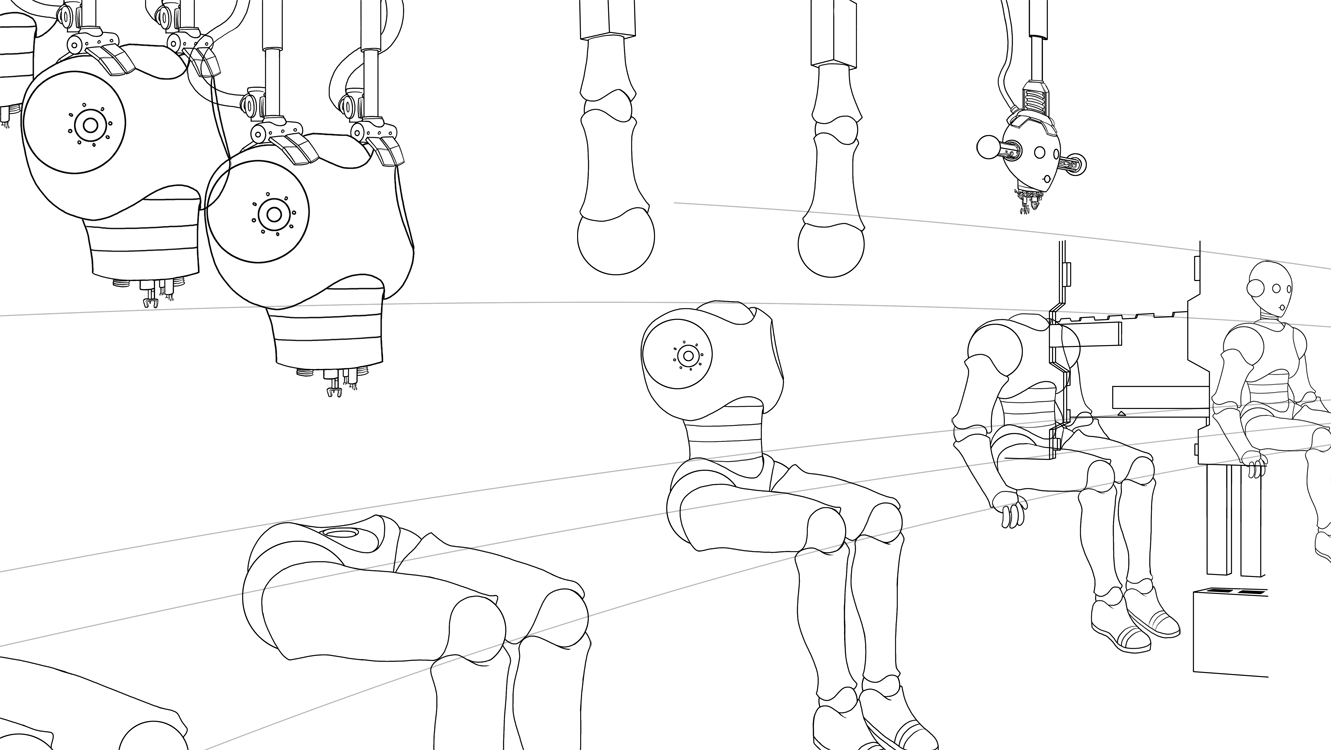
Botnets are not commonly used for hacking Facebook accounts, because of it's high setup costs. They are used to carry more advanced attacks. A Botnet is basically a collection of compromised computer. The infection process is same as the key logging, however a Botnet gives you additional options for carrying out attacks with the compromised computer. Some of the most popular Botnets include Spyeye and Zeus.
To listen to the audio version of this article click on the play image.

Brought to you by @tts. If you find it useful please consider upvoting this reply.
Thanks! That is really cool!
.jpg)
Amazing post!
It will be my reference on A.I.
As a follower of @followforupvotes this post has been randomly selected and upvoted! Enjoy your upvote and have a great day!
Popcorn
Posted using Partiko iOS
!giphy good + job
Posted using Partiko iOS
giphy is supported by witness untersatz!
Highly rEsteemed!